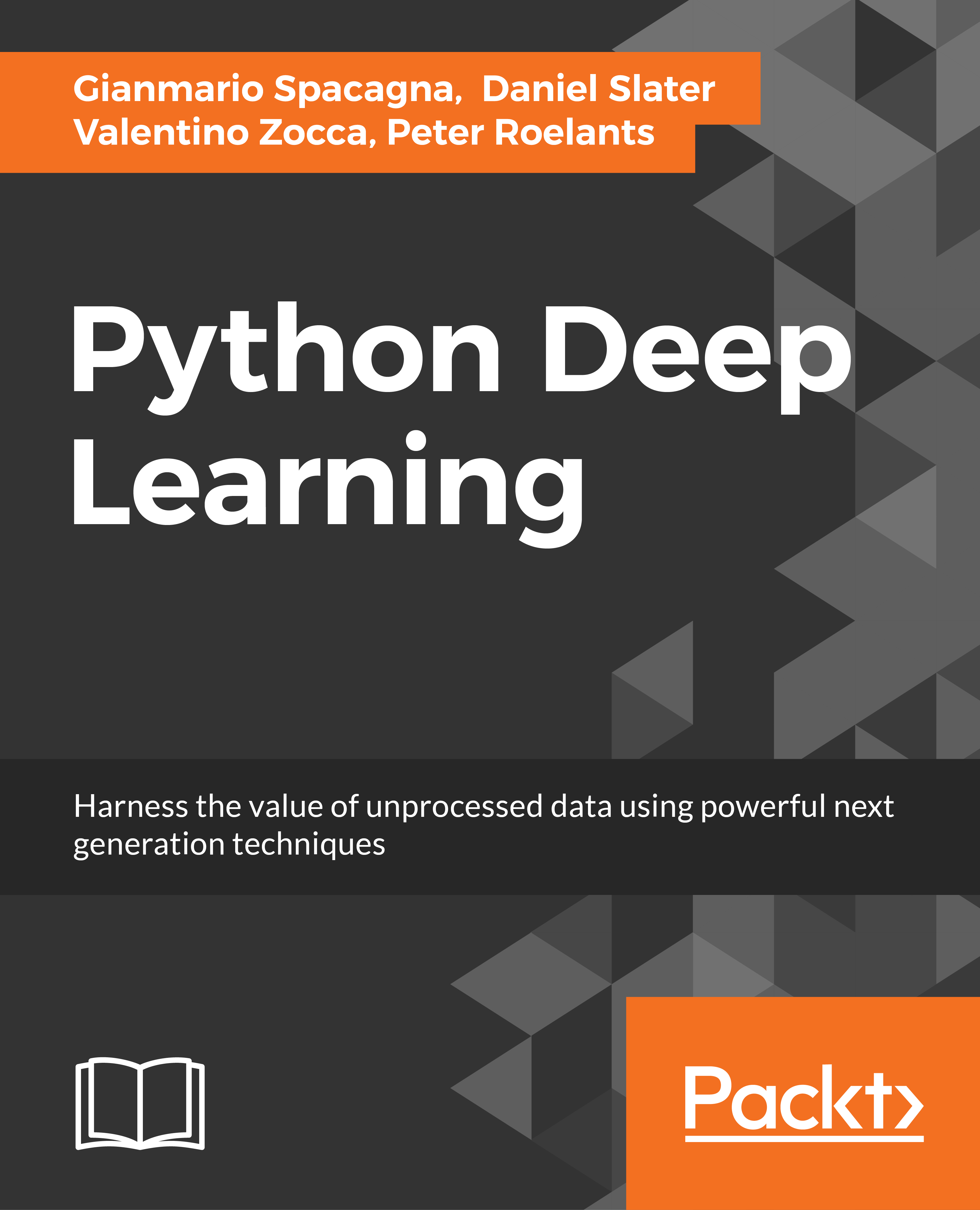-
Book Overview & Buying

-
Table Of Contents

Python Deep Learning
By :

Python Deep Learning
By:
Overview of this book
 Free Chapter
Free Chapter
 Sign In
Start Free Trial
Sign In
Start Free Trial


 Free Chapter
Free Chapter
In the previous chapter, we described several machine learning algorithms and we introduced different techniques to analyze data to make predictions. For example, we suggested how machines can use data of home selling prices to make predictions on the price for new houses. We described how large companies, such as Netflix, use machine learning techniques in order to suggest to users new movies they may like based on movies they have liked in the past, using a technique that is widely utilized in e-commerce by giants such as Amazon or Walmart. Most of these techniques, however, necessitate labeled data in order to make predictions on new data, and, in order to improve their performance, need humans to describe the data in terms of features that make sense.
Humans are able to quickly extrapolate patterns and infer rules without having the data cleaned and prepared for them. It would then be desirable if machines could learn to do the same. As we have discussed...
